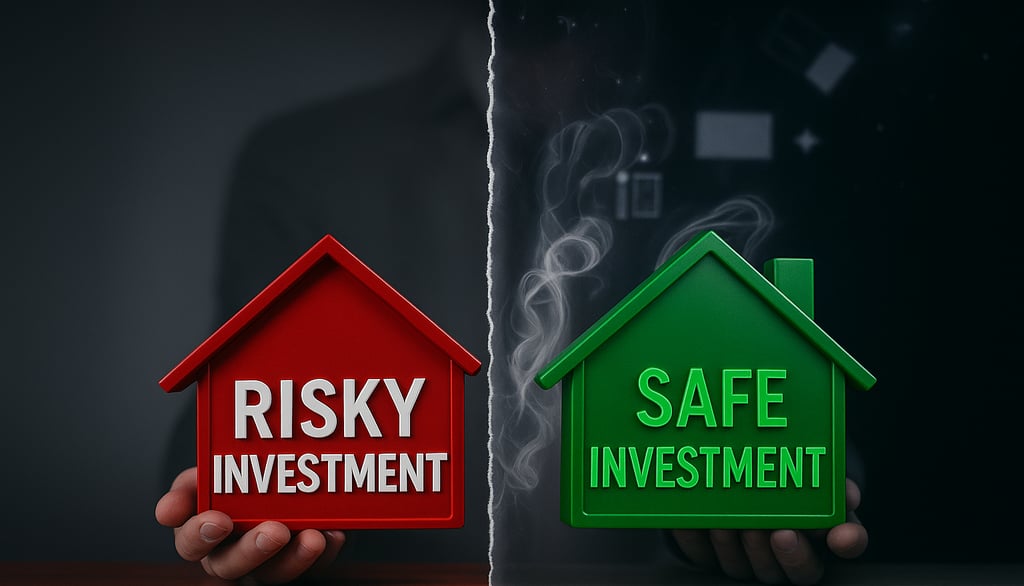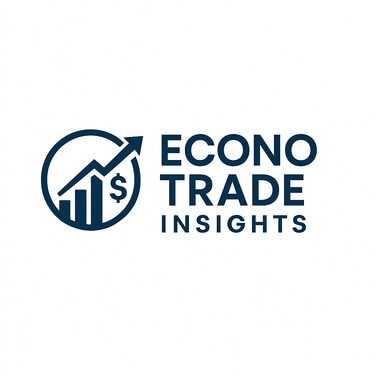Understanding Risky vs Safe Investments: Making Informed Choices
10/11/20254 min read


What Are Risky Investments?
Risky investments are financial assets or opportunities that are characterized by a significant potential for substantial losses, alongside the chance for high returns. These types of investments are generally subject to market volatility, making them less predictable compared to safer alternatives. Investors contemplating risky investments should be aware of the inherent uncertainties involved, which demand a higher risk tolerance and a strategic mindset.
One of the primary characteristics that classify an investment as risky is its susceptibility to market fluctuations. Financial assets such as stocks often experience dramatic price swings due to the influence of various factors including economic conditions, corporate performance, and investor sentiment. This volatility can lead to significant gains, but it can also result in considerable losses. Thus, stocks are frequently considered risky investments, particularly if an investor lacks sufficient knowledge about the markets or the specific companies involved.
Another category of high-risk investments includes cryptocurrencies. These digital currencies can offer unprecedented return potential, but they are notorious for their price instability. The value of cryptocurrencies can skyrocket or plummet within a very short time frame, largely driven by investor speculation and market trends. Consequently, while there may be substantial reward opportunities, the possibility of financial loss looms equally large.
Startups also fall into the risky investment category. Investing in new businesses, particularly in their early stages, can yield significant profits if the venture succeeds. However, most startups fail, leaving investors with little to show for their financial commitment. Mindset plays a crucial role in engaging with risky investments; potential investors should possess not only a comprehensive understanding of the asset but also the emotional resilience to withstand the financial fluctuations associated with such high-stakes opportunities.
What Are Safe Investments?
Safe investments are often characterized by their stability, lower volatility, and consistent returns compared to riskier alternatives. These investment types are particularly appealing to those who prioritize capital preservation and reliable income. Safe investments typically involve relatively low risk, which means that the potential for large gains is often accompanied by a significantly reduced chance of losing invested capital. This combination of low risk and lower anticipated returns is what distinguishes safe investments from more aggressive strategies.
Common examples of safe investment options include government bonds, savings accounts, and blue-chip stocks. Government bonds, often seen as one of the safest investments available, are issued by national governments and backed by their creditworthiness. These bonds provide steady interest payments and return the principal upon maturity, making them a reliable source of income. Savings accounts, although offering lower returns compared to other investment alternatives, provide complete security and easy access to funds, making them an essential component of many individuals' financial portfolios.
Blue-chip stocks, which are shares of established companies known for their reliability and performance, also classify as safe investments. These companies typically possess a strong financial foundation and a history of steady dividend payments, contributing to their perception of safety in the investment community. Additionally, investing in these stocks can provide the potential for capital appreciation over time, complementing their stability with growth opportunities.
Opting for safe investments can particularly benefit risk-averse investors by helping them to navigate market fluctuations while ensuring a steady return over the long term. By focusing on capital preservation and fostering a reliable income stream, these investments serve as a foundation for financial security, particularly in volatile economic climates. Therefore, understanding the characteristics and advantages of safe investments is crucial for individuals seeking to make informed financial decisions.
Key Differences Between Risky and Safe Investments
Investment strategies can be broadly categorized into two types: risky investments and safe investments. Understanding the core differences between these two categories is crucial for investors seeking to make informed financial choices. One of the primary differences lies in potential returns. Risky investments, such as stocks or cryptocurrencies, often promise higher returns to compensate for the level of risk involved. In contrast, safe investments, like government bonds or dependable blue-chip stocks, tend to offer lower returns, which reflect their stability and reduced risk of capital loss.
Another significant factor is the risk tolerance levels that investors must embrace. Risk tolerance varies greatly among individuals; those with a higher risk tolerance may gravitate towards investments that can yield substantial gains over shorter periods. On the other hand, conservative investors tend to prefer safe investments that preserve capital, especially if they are nearing retirement or have specific financial obligations.
Liquidity, or the ease of converting an investment into cash without impacting its value, also distinguishes these two categories. Risky investments, particularly in volatile markets, can often lead to dilemmas regarding liquidity, where selling may result in losses. Conversely, safe investments are generally more liquid, providing investors with the flexibility to access their funds when needed.
Furthermore, time horizon implications play a critical role in the investment decision-making process. Investors with a longer time horizon can absorb short-term volatility associated with risky investments, making them potentially more lucrative over time. Meanwhile, those with a shorter time frame might find solace in safer investments, prioritizing capital preservation over capital appreciation. This comprehensive analysis emphasizes the need for investors to align their strategies with both their personal financial goals and risk profiles, ensuring a balanced approach to investing.
Get Started with Smart Investing: Choosing the Right Exchange
As you embark on your investment journey, selecting the appropriate exchange is a crucial step. In a rapidly evolving financial landscape, investors are increasingly drawn to platforms that offer a variety of assets, including cryptocurrencies alongside traditional investments. Engaging with a reputable exchange like OKX can significantly enhance your trading experience by providing numerous options tailored to both risky and safer investment strategies.
When considering investments, it is essential to understand the stark differences between cryptocurrency investing and traditional investment avenues such as stocks and bonds. While traditional investments often exhibit a more predictable pattern, cryptocurrencies bring forth volatility, leading to potential high rewards alongside significant risks. This duality makes the choice of exchange imperative for managing risks effectively. OKX is acknowledged for its robust security measures, user-friendly interface, and a plethora of trading options, appealing to both novice and experienced investors.
Moreover, reliable exchanges often offer advanced tools that facilitate educated investing, including real-time market data, analytical charts, and diverse trading pairs. These features empower investors to make timely and informed decisions, reducing uncertainty in both high-risk and low-risk investments. A well-structured platform enhances your ability to assess market dynamics, ensuring you can adapt your strategies as needed.
As you consider your investment strategies, reflect on your financial goals and tolerance for risk. Investing is a personal journey that requires careful planning and execution. If you are ready to take the next step, explore the opportunities available at OKX by visiting https://www.okx.com/. This can be a pivotal move in shaping your investment portfolio and achieving financial growth.
EconoTrade Insights
Learn. Trade. Grow.
Empowering financial freedom through smart education and trusted tools.
© 2025 ECONO TRADE INSIGHTS. All rights reserved.
About - https://econotradeinsights.com/about-us-financial-blogging
Contact - econotradeinsights@gmail.com
Disclaimer - https://econotradeinsights.com/disclaimer
Terms & Conditions - https://econotradeinsights.com/terms-and-conditions
